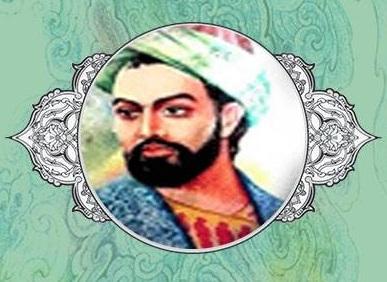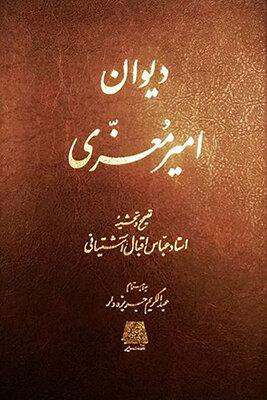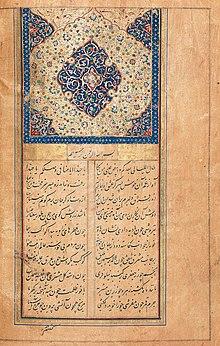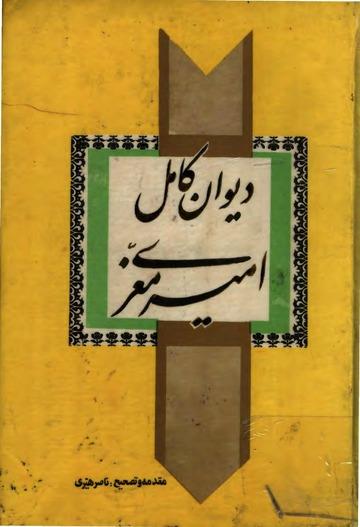Biography of Amir Moez Neishaburi; Seljuq court poet

 Amir Moez Nishaburi
Amir Moez NishaburiAn abstract of the biography of Amir Moez Neishabouri:
Full name: Amir Abu Abdullah Muhammad, son of Abdul Malik Moezzi Neishaburi
Date of birth: 439 AH
Place of birth: Neyshabur, Iran
Profession: Poet
Nickname: Amir Moazi, Amir al-Shaara
Surname: Moezi
Died: 528 to 520 AH
 Biography of Amir Moez Nishaburi
Biography of Amir Moez NishaburiBiography of Amir Moez Neishabouri:
Amir Abu Abdullah Muhammad son of Abdul Malik Moezzi Neishaburi was born in 439 AH in Neishabur. The surname of this poet was Muazi, who was known as a famous person in the sixth century. He is the son of Abdul Malik Burhani and nicknamed Amir al-Shaara, who praised the great Seljuk kings for a long time. It has been Malek Shah and Sanjar. Muazi's father died in Qazvin at the beginning of Malik Shah's reign and entrusted his son to Malik Shah. He lived in Menthai Jalal and was one of the richest people of the time.
As they have considered him to be an elemental consort in this field, he was able to reach a high position during the reign of Sanjar and received the position of Amir al-Amra and Malik al-Shaara, his last name is Muazi following his assignment to Muazuddin Malik Shah bin Alb Arslan.
Moazi's poetic characteristics:
Moezi is one of the famous Iranian poets who have been praised by Arbab Tadzireh and some other poets, so that they consider him one of the great eloquent and masters of words. which did not have much literary status.
Moezi was one of the poets who had a fine temperament and an average literary character, but he did not have a mature temperament and thought, he was more imitative than arrogant. In his odes, he imitates Elenari and Farrokhi in his sonnets, although he has not been very successful. The images in Moazi's poems are not vivid, dynamic and arrogant. Based on the poetic images of the past, instead of the personal and direct experience of the phenomena, he adapts and integrates the images from the poetic divans of the past.
Moazi's exaggeration of praise:
This poet was one of the examples of people who are obliged to praise. The divan that this poet has is exaggeration at the highest level regarding praises, in many cases he has even abandoned Shari'a etiquette and considered the praisers of his race to be equal to the Prophet of Islam.
 Amir Moez Neishaburi's poems
Amir Moez Neishaburi's poemsStyle of Amir Moez Nishabouri:
The nature of Moazi's poems is the simplicity of its expression. He conveys many meanings in simple and unpretentious words, the effort that this poet has used in composing Ghazal Ghazals has definitely become a good tool for the advancement of the art of Ghazal writing. In the composition of words, Moazi is more influenced by the general accent of his era than the poets of the late 5th and early 6th centuries. Diwan Amir Moazi, which was arranged and printed by Abbas Iqbal Ashtiani, has 18,623 lines of poetry.
Amir Moez Nishaburi; court poet:
Muazi was one of the court poets who wrote poetry not based on his opinion but based on his time, so that he earned praise from all people for his education, livelihood and survival. Among the poets who lived in Moazi at the same time, we can mention Masoud Saad Salman, Sanai Ghaznavi, Suzani Samarkhandi, Anuri Abiyordi, etc.
The main feature of Moazi's poems is related to their simplicity. This poet conveys many meanings in simple and uncomplicated words, his strength of character in making simple expressions without obscurity and obscurity has been the attention of speech critics since ancient times.
Although Farrokhi's lyrics are not found in Tarawat's ghazals and ghazals, the effort he used in composing ghazals has definitely become an effective tool in the advancement of the art of ghazal writing. In the meantime, we do not only come across praise and ghazal, but in some cases we can also see the signs of preaching and admonition, monotheism and wisdom.
The works of Amir Moez Nishabouri:
The only work of this poet that exists is his poetry collection, which contains 18,623 verses in the form of odes. This Diwan was corrected once by the late Professor Abbas Iqbal Ashtiani and then it was published, but due to many mistakes that were made in the book during the printing process; For the second time, Mohammad Reza Ghanbari undertook the task of correcting it.
Muazi was one of the poets of the Seljuk court, whose job and profession are considered to be a poet, this is the reason why he had to write poetry on the occasions and in praise of the kings. If we look at Moazi's poems from this point of view, he has been very successful in his career. As it is necessary for a court poet, exaggeration and exaggeration and speaking according to the state of the king, and in this regard Moazi is completely successful.
The dispute about Muazi:
There is a difference of opinion about Muazi among the researchers, some literary greats such as Jalal al-Din Homayi introduce him as a combination of freshness and beauty of words with modesty and strength of speech, or Allameh Mohammad Qazvini believes that his poetry is “from nectar and sugar He takes hostages and does not count the sugar of Tabarzd as nothing.
In the meantime, some elders such as goldsmith Dr. Hamidi Shirazi and professor Shafii Kodkani have praised this poet who did not have the creative power of poetry. Far from all these judgments, the influence that Moazi left on his later poems can be examined in the context of the evolution of Ghazal. This poet is one of the founders of ghazal in Persian literature, a method that is perfected in the words of Saadi and Hafez.
 The works of Amir Moez Nishaburi
The works of Amir Moez NishaburiGhazal Sarai Shahir:
Moezi was famous for writing ghazals in his time, so that Aufy, in his Tazkira Labab al-albab, cites fifteen ghazals of Moezi's poetry and only mentions and odes of him.
Finally, it should be mentioned that Moazi was a poet who experimented in the form of odes. Most of his poems are praises and in some cases, moral teachings and rulings are also seen in them. His poetic language was simple, smooth and far from complexity or depression. His poetic images are not lively, dynamic and innovative, and are often a combination and adaptation of the poetic images of the past.
An example of Moazi's poems:
Do not go home except in my dear country
For a while, I will mourn for the quarter, the funeral and the burial
I will bleed a quarter of my heart and bury it in rosy soil
I will wash away the tears from my own eyes
From Yar Khargehi, Ivan Hemi, I see some help
The height of that head and head, I can see the grass empty
Instead of Ratal and Jam May, Goran put Pi
Instead of the harp, pipe, and reed, the song is a raven and a raven
compilation: Cover biographical section






